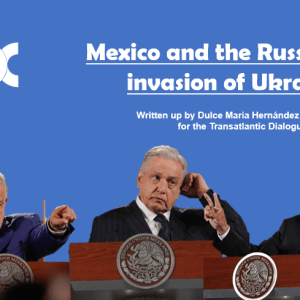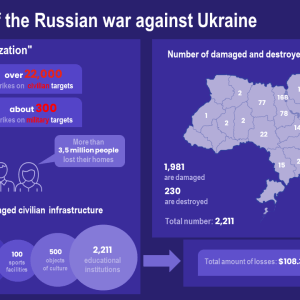On 4 May Belorussian Minister of Defense announced sudden large-scale drills to test the combat readiness of the armed forces of Belarus. According to the Belarussian defense ministry, there is a planned “movement of significant numbers of military vehicles”. However, the destination point of military units was not specified. Such a statement was made the next day after talks between Lukashenko and Putin on the so-called “special military operation of Donbas deliberation” had been held. In addition, as part of the second stage of inspecting the Belarusian immediate reaction forces, special operations troops will be deployed near the border with Ukraine. That increases the likelihood of the Belorussian invasion of Ukraine.
Non-transparent military drills in Belarus coincided in time with explosives on military objects in Transnistria (at the end of April) and the Russian Victory Day parade on the 9th of May, where Putin was expected to announce war on Ukraine and launch mass mobilization across the country. It did not happen though. Events in Belarus and Transnistria could be integral parts of the Russian invasion development scenario.
One of Putin’s key objectives in the war against Ukraine is to occupy the south of Ukraine to transform Ukraine into a landlocked state and create a landbridge to Transnistria which in the short-term perspective threatens the integrity and sovereignty of Moldova. It appeared difficult to accomplish this task due to lagged offensive operations in Kherson and Mykolayiv regions. So, the Kremlin is planning to disperse Ukrainian troops to surround their part in Donbas, occupy Odesa, and force the government in Kyiv to surrender. That may be accomplished only by opening the Belarus front and the Transnistria front.
Belarus. Belarussian forces did not join Russian troops at the beginning of hostilities due to the absence of a political will, fantastic civilian and military resistance, and the failure of Russian troops to occupy Kyiv. It does not seem like the situation has changed, but the Kremlin has leverage to coerce Lukashenko to execute its commands after Russian troops have suppressed Belorussian protests in the summer of 2020.
Transnistria. There was a series of minor explosions in the Russian-speaking separatist region of Transnistria on April 25 and 26. The explosions damaged an empty local security service building and two radio masts but caused no casualties. After those incidents had occurred, the defense ministry of the breakaway region of Transnistria in Moldova started the mobilization of all men between 18 and 55, “to replenish the peacekeeping contingent”.
After the information about the explosions in unrecognized Transnistria, there are car queues along the border with Moldova
Transnistrian armed forces do not possess any serious threat to Ukraine. There are only 1 300 Russian soldiers, 5 500 active personnel of the Armed Forces of the so-called “Pridnestrovian Moldavian Republic” and 20 000 reserve personnel. Such a small number of ill-trained military troops can not be considered a big problem for the Ukrainian army. Still, hostilities on the Transnistrian-Ukrainian border will distract some Ukrainian troops from the southern front and will make it easier for the Russian army to occupy Mykolayiv.
Mass mobilization. The Russian army demonstrated insignificant progress in Donbas. The Russian occupiers intend to break through Izyum and capture Kramatorsk and Severodonetsk. This will help them cut off the Ukrainian armed forces in the East of Ukraine. In order to realize that plan, the Kremlin is likely to involve a larger amount of soldiers during the mass mobilization. Although Putin did not announce mass mobilization in his speech, such a possibility still exists.
Map of combat operations as of May 12
The third phase of the Russian invasion could be launched with simultaneous hostilities breaking out on Ukrainian-Belorussian and Ukrainian-Transnistrian borders with mass mobilization inside the Russian Federation. This predicted course of events should be responded to with rapid and effective countermeasures by the Western allies.
- Firstly, the U.S. and its NATO allies should provide military units in the North, the East, and the South with all military equipment necessary to repel attacks quickly and effectively.
- Secondly, the Western countries should tilt Moldova to more anti-Russian rhetoric and policy whereas in the case of Ukraine’s defeat Moldova will face an existential threat emanating from the Russian Federation. President of Moldova Maya Sandu has taken a neutral position in order not to “provoke Russia”.
- Finally, NATO should strengthen its Eastern flank in order to be ready to react quickly to hostilities occurring near Romanian borders. Keeping in mind that Transnistria has been a long-time obstacle for the unification process of Moldova and Romania, securing this region would create new integration opportunities for the Alliance.


